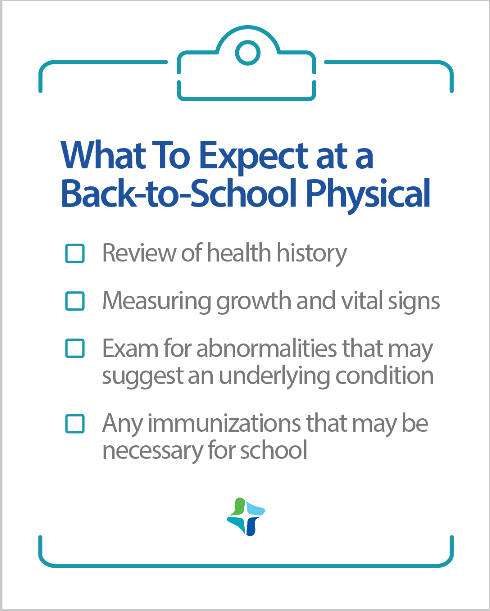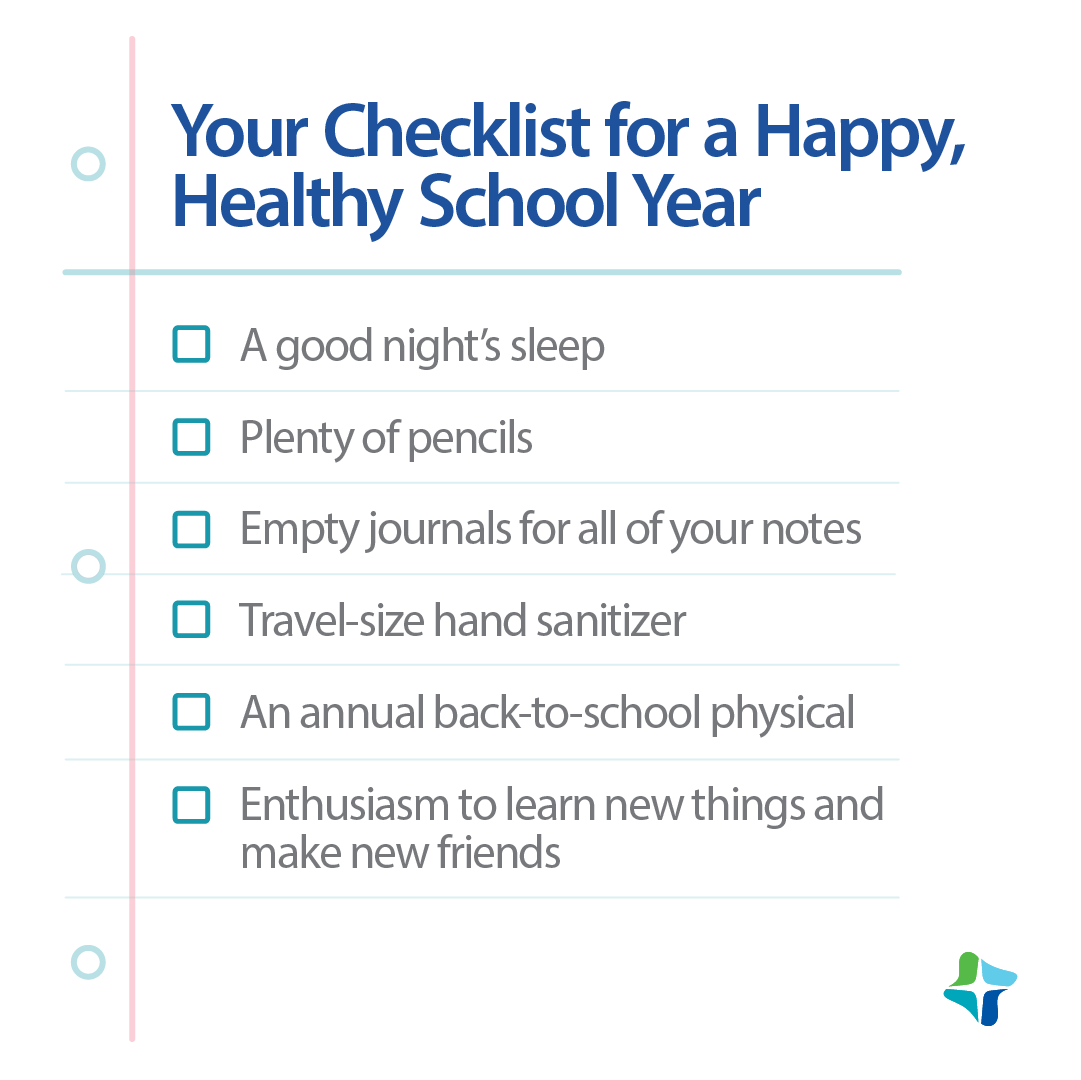St. Joseph Health joins CommonSpirit.org soon! Enjoy a seamless, patient-centered digital experience. Learn more

Whether your child spent the last year in a classroom or learning from home, returning to in-person classes for a new school year can cause a bit of anxiety. But did you know that there are steps you can take to help your child ease back into classes? Here are some ways to relieve back-to-school anxiety.
Recognize how your child experiences anxiety.
Most children probably won’t understand that what they are experiencing is anxiety, but they may mention the symptoms they’re experiencing. Keep in mind that there are many different types of anxiety; to name a few, separation anxiety, social anxiety, testing anxiety, and generalized anxiety. It’s important to know that anxiety manifests differently depending on what type the child is experiencing, and even then, everyone experiences anxiety differently. Some of the common ways it shows in children are:
⦁ Shaking or trembling
⦁ Recurring fear or distress in the absence of parents
⦁ Trouble concentrating
⦁ Inability to get rid of negative thoughts
⦁ Headaches
⦁ Avoiding people or social situations
⦁ Stomachaches
⦁ Difficulty sleeping
⦁ Anger
⦁ Refusing to sleep alone
⦁ Restlessness or feeling on edge
⦁ Racing heartbeat
⦁ Low self-esteem
⦁ Dizziness or fatigue
Of course, these aren’t the only signs of anxiety in children, and if you feel your child is experiencing anxiety, trust your instincts and have them try out some meditation or mindful breathing.
Practice mindfulness.
Deep breathing is one of the simplest ways to ease anxiety. A proven method of deep breathing can be practicing 4-7-8 breaths, a technique where one breathes in through their nose for a count of 4 seconds, holds their breath for 7 seconds, and then breathes out through their mouth for 8 seconds. Another good way to practice mindfulness is through loving-kindness meditation, which can help relieve anxiety and promote high self-esteem. Meditations, in general, are an excellent way to get out of your immediate headspace and begin to look at your situation from another viewpoint.
It’s important to remember that one of the most crucial things about teaching your child mindfulness is learning by example. If you don’t believe in it or practice mindfulness yourself, they’re most likely not going to take too kindly to it.
Prioritize your child’s mental health.
Your child must know that you take their mental health as seriously as their physical health. It’s important to intervene and teach them behaviors that will help them calm down from their anxious state. In fact, most anxiety disorders are treated best using cognitive behavioral therapy, a treatment that involves knowing when one is in an anxious state and trying to resolve the feeling before it worsens. By teaching your child these ways to manage their anxiety, you’re staying a step ahead of the game and starting them on the path to overcoming their anxious behaviors will also prove to be a bonding experience.
If your child is experiencing symptoms of any mental illness, schedule a check-up with their pediatrician or family medicine physician.
Consider your child’s physical health.
Mental health and physical health go hand in hand, and it’s essential to check up on both regularly. One of the best ways to check up on your child’s physical health is to schedule a routine physical for them every year before the beginning of the school year. Here’s a helpful checklist that can guide you through what to expect at a physical:

Teach your child it’s okay to ask for help.
One of the most important skills you can teach your child is how to ask for help when they need it. By teaching them that it’s all right to reach out and ask for assistance, you’re showing them that they don’t have to shoulder their emotional burden alone, which is crucial in fostering a healthy relationship between your child and their emotions. Letting your child know that you’re there for them can also strengthen your relationship as a whole, which makes them less likely to develop mental health disorders later on.
When teaching this, consider being mindful of your behavior, as children often learn by example. Don’t be afraid to ask your child for help with small tasks, so they know it’s normal to ask others for help with things.
Recite back-to-school prayers or affirmations.
Studies have shown that praying can decrease anxiety, increase attention, and boost positive moods. For those who practice, a back-to-school prayer can help if you share it with your child and encourage them to remember it when they’re feeling anxious. Here’s one example of a prayer you might teach your child:
“Dear God, may you and your guardian angels watch over me and my school today, protect us from harm and sickness, and may those who are sick receive your blessings and be well again. Amen.”
For those who don’t practice, a simple mantra or affirmation may help. Anything that your child could easily remember can support them. It’s been shown that even just focusing on counting or saying the alphabet can help someone calm down. Here are a few affirmations that they can use:
⦁ “I am enough.”
⦁ “This will pass.”
⦁ “I will get better.”
Make sure your child has everything they need for class.
Another good way to relieve anxiety is to make sure that your child is fully prepared for school. By making sure they have everything they need, you’re solidifying that they won’t have to worry about not having any supplies, eliminating stress before it can even happen. Here are the essentials for the first day back at school.

Along with these essentials, you should also make sure that your child has a sturdy backpack and everything their new teachers list as essential for the new school year.
Whether your child is anxious about having to wear a mask this school year or worried about making friends, it’s still important to check in on their mental and physical health. Schedule an appointment with one of our physicians today or learn more about annual physicals.
Sources:
BetterHelp | What Are The Symptoms Of Anxiety In Children?
American Academy of Child & Adolescent Psychiatry | Talking to Kids About Mental Illness
PsychologyToday | Teach Your Child To Ask for Help–the Right Way
Looking for a doctor? Perform a quick search by name or browse by specialty.